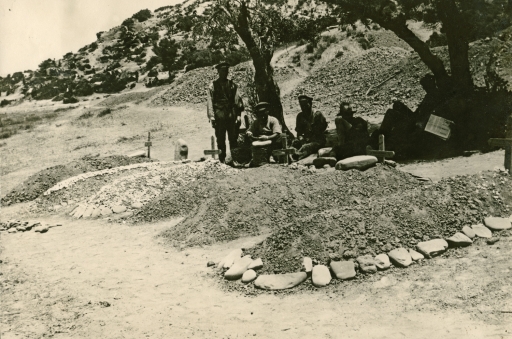The last major Allied offensive at Gallipoli was launched on August 6th 1915.
It was a concerted attempt to break more than three months of deadlock in the campaign against Germany’s ally, Turkey.
Allied forces were still confined to the beaches of the Gallipoli peninsula where they’d landed on April 25th 1915.
A series of attacks was launched on August 6th, with the aim of capturing the heights of Sari Bair above Anzac Cove.
Australian, New Zealand, British, Irish and Gurkha troops were involved in the operation, which also saw a new British landing at Suvla Bay intended to support the breakout.
The Australians stormed Turkish trenches at Lone Pine to divert attention from the main assault, taking control after four days of fierce fighting.
But they suffered heavy losses in another attack on a ridge known as the Nek, for no gains. In one of the many controversial episodes of the campaign, soldiers of the Light Horse Brigade made successive charges under heavy fire.
The New Zealanders occupied the summit of Chunuk Bair on August 8th. Despite the arrival of British reinforcements, it was recaptured two days later as part of an Ottoman counter-attack, led by Mustafa Kemal, that drove the allies back from the heights.
The Battle for Chunuk Bair was also notable as the first major engagement of the Maori Contingent.
British generals failed to exploit their advantage at Suvla and after the Ottomans defeated another break-out on August 21st, the Gallipoli campaign returned to stalemate.
In October, a new British commander at Gallipoli recommended evacuation. The Government confirmed the decision after a visit to the peninsula by the War Minister, Field Marshal Lord Kitchener.
The Australians held Lone Pine until the withdrawal of Allied forces from Gallipoli in December 1915.
Detailed accounts of the August offensive at Gallipoli can be found on the websites of the Australian War Memorial, the New Zealand Government’s NZ History, and the Gallipoli Association.
Images courtesy of Auckland War Memorial Museum – Tamaki Paenga Hira PH-RES-1471)
Posted by: Peter Alhadeff, Centenary News
